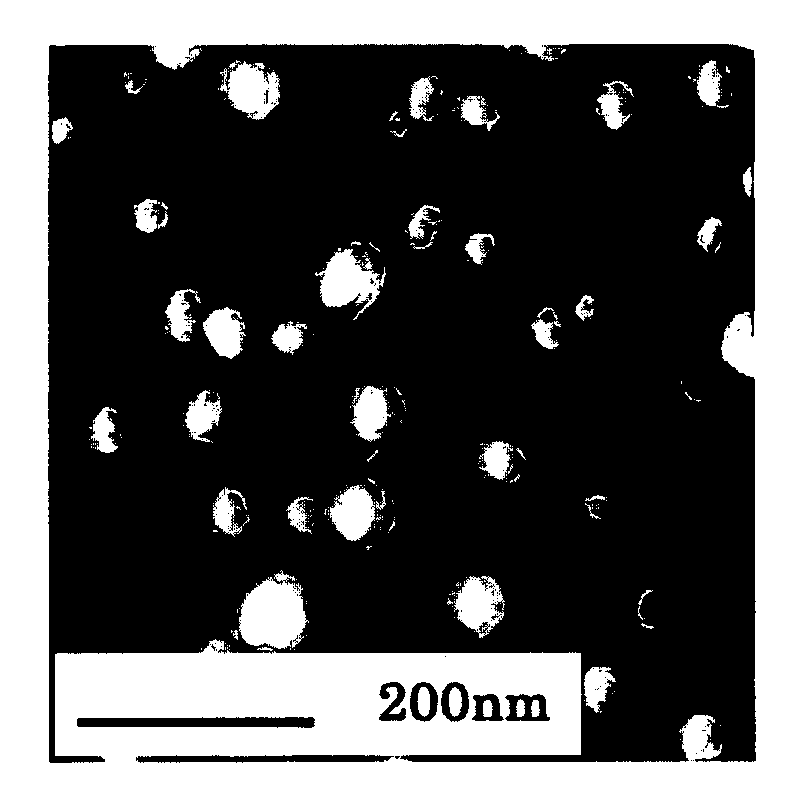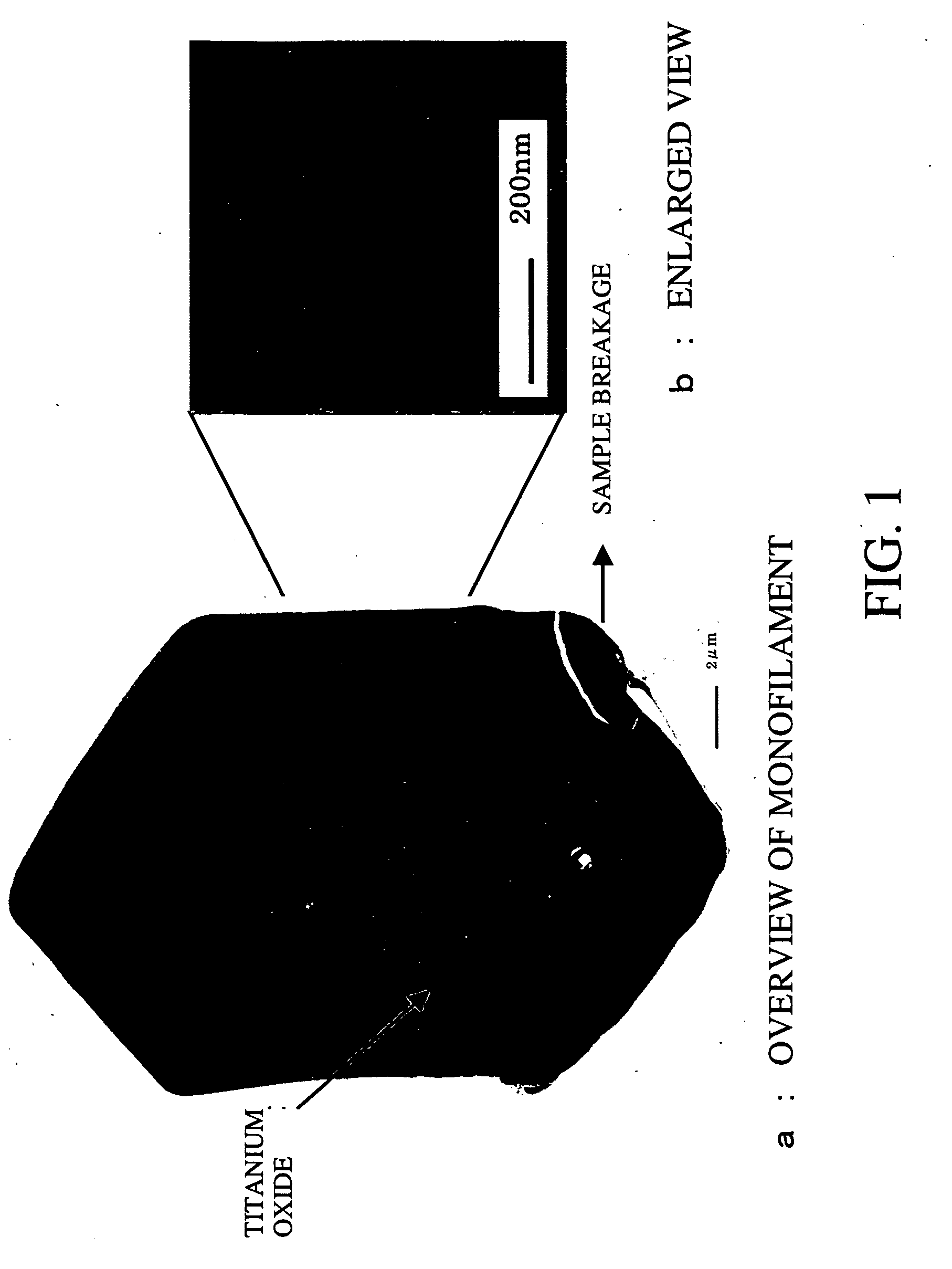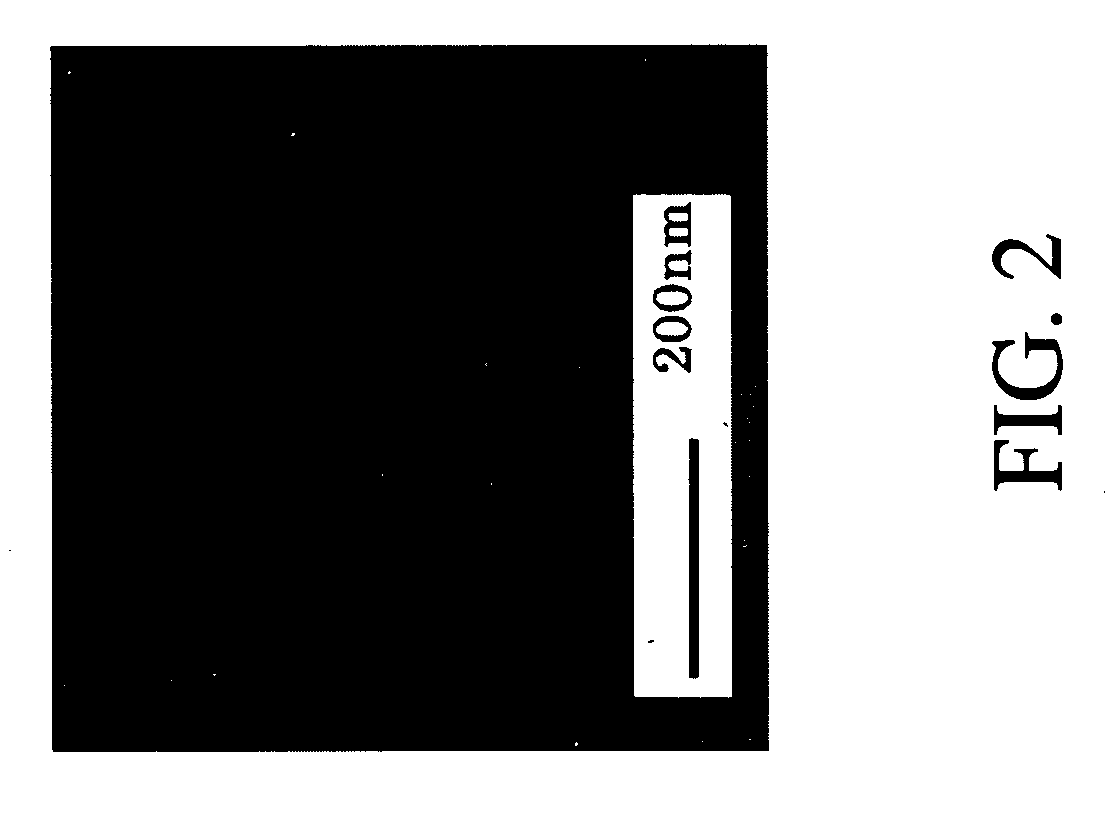Porous fiber
- Summary
- Abstract
- Description
- Claims
- Application Information
AI Technical Summary
Benefits of technology
Problems solved by technology
Method used
Image
Examples
example 1
[0288] A N6 (80% by weight) and a copolymerized PET (20% by weight) were melted and kneaded in a twin-screw extrusion-kneader at 260° C. to obtain polymer alloy pellets. The N6 had a relative viscosity of 2.15, a melt viscosity of 274 poises (280° C. at a rate of shear of 2432 sec−1), a melting point of 220° C., and an amount of terminal amino groups of 5.0×10−5 molar equivalent per gram as a result of blocking amine terminals with acetic acid. The copolymerized PET had an intrinsic viscosity of 0.60, a melt viscosity of 1400 poises (280° C. at a rate of shear of 2432 sec−1) and a melting point of 250° C., had been copolymerized with 5% by mole of 5-sodiosulfoisophthalic acid and contained 0.05% by weight of titanium oxide.
[0289] The transmission electron micrograph of a cross section of the polymer alloy pellets is shown in FIG. 5. The copolymerized PET as islands had diameters in terms of circle of 20 to 30 nm (average diameter of dispersed particles of 26 nm) and were substantia...
example 2
[0309] The N6 and the copolymerized PET were subjected to melt-kneading by the procedure of Example 1, except for blending 95% by weight of N6 and 5% by weight of the copolymerized PET. The kneaded product was subjected to melt spinning and draw false-twisting by the procedure of Example 1, except for changing the discharge rate per one orifice and the number of spinneret orifices, to obtain a 90 dtex, 34-filament crimped polymer alloy yarn. The yarn could be satisfactorily spun without any yarn breaking during continuous spinning for 24 hours.
[0310] The resulting highly oriented undrawn yarn had excellent properties including a strength of 2.7 cN / dtex and a U % of 0.8%. The yarn showed good processability without any yarn breaking in the draw false-twisting process. The crimped yarn had a high bulkiness in terms of a CR of 45% and exhibited excellent crimping quality with satisfactory untwisting. The cross section of the resulting crimped polymer alloy yarn was observed under a TE...
example 3
[0313] The N6 and the copolymerized PET were subjected to melt-kneading by the procedure of Example 1, except for blending 90% by weight of N6 and 10% by weight of the copolymerized PET. The kneaded product was subjected to melt spinning and draw false-twisting by the procedure of Example 1, except for changing the discharge rate per one orifice and the number of spinneret orifices, to obtain a 90 dtex, 34-filament crimped polymer alloy yarn. The yarn could be satisfactorily spun without any yarn breaking during continuous spinning for 24 hours. The resulting highly oriented undrawn yarn showed excellent properties including a strength of 2.7 cN / dtex and a U % of 0.8%. The yarn showed good processability without any yarn breaking in the draw false-twisting process. The crimped yarn had a high bulkiness in terms of a CR of 40% and exhibited excellent crimping quality with satisfactory untwisting.
[0314] The cross section of the crimped polymer alloy yarn was observed under a TEM and ...
PUM
| Property | Measurement | Unit |
|---|---|---|
| Weight | aaaaa | aaaaa |
| Weight | aaaaa | aaaaa |
| Fraction | aaaaa | aaaaa |
Abstract
Description
Claims
Application Information
 Login to View More
Login to View More - R&D
- Intellectual Property
- Life Sciences
- Materials
- Tech Scout
- Unparalleled Data Quality
- Higher Quality Content
- 60% Fewer Hallucinations
Browse by: Latest US Patents, China's latest patents, Technical Efficacy Thesaurus, Application Domain, Technology Topic, Popular Technical Reports.
© 2025 PatSnap. All rights reserved.Legal|Privacy policy|Modern Slavery Act Transparency Statement|Sitemap|About US| Contact US: help@patsnap.com



